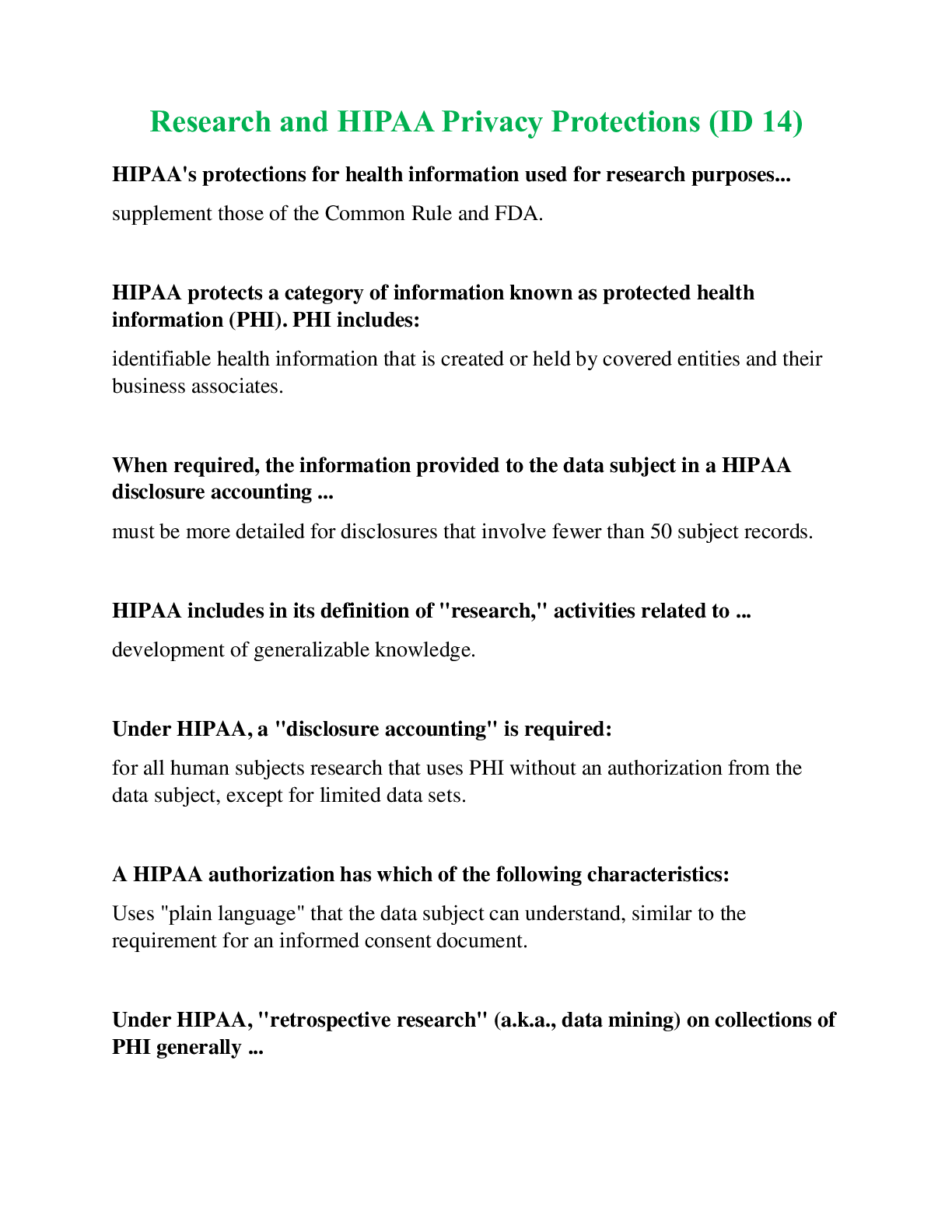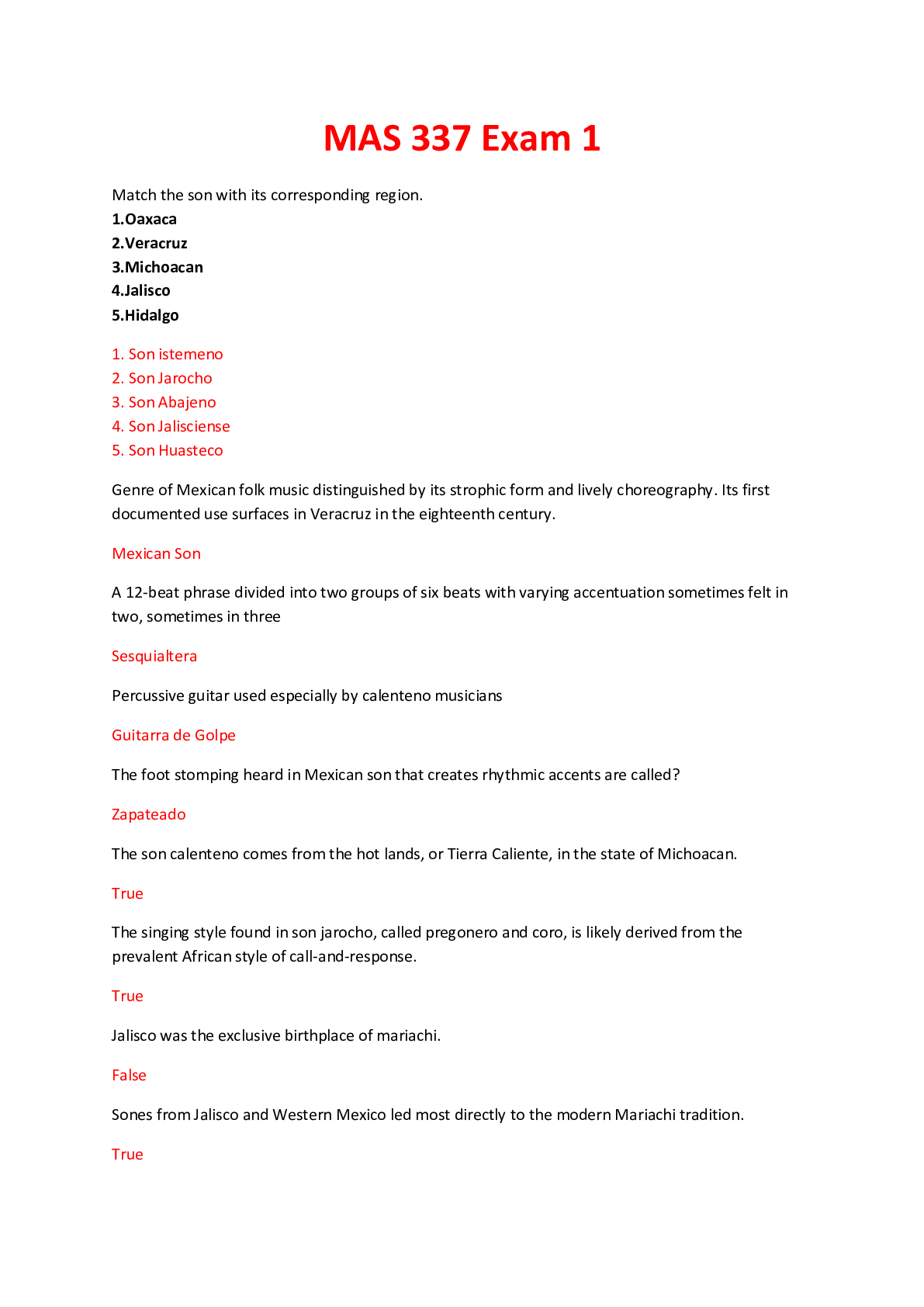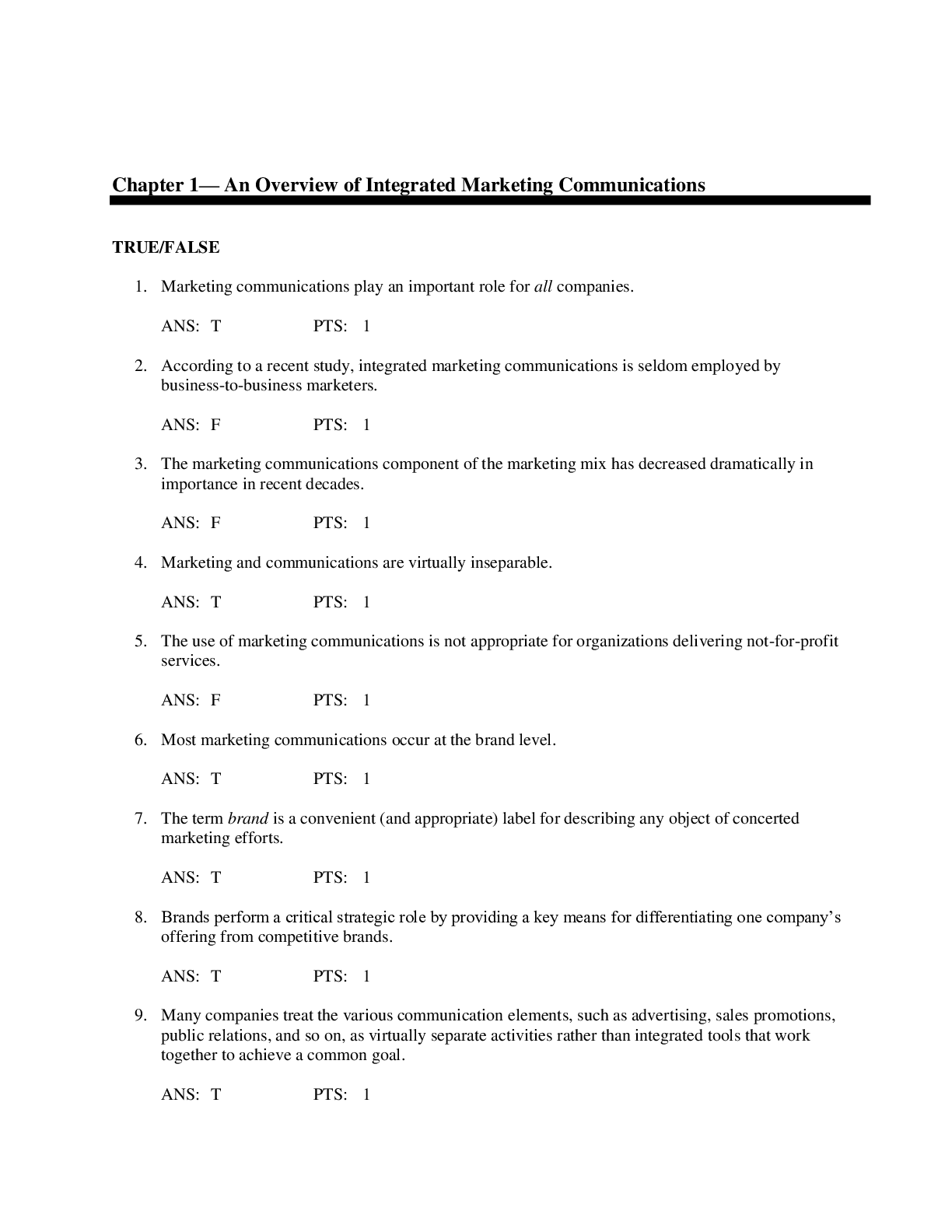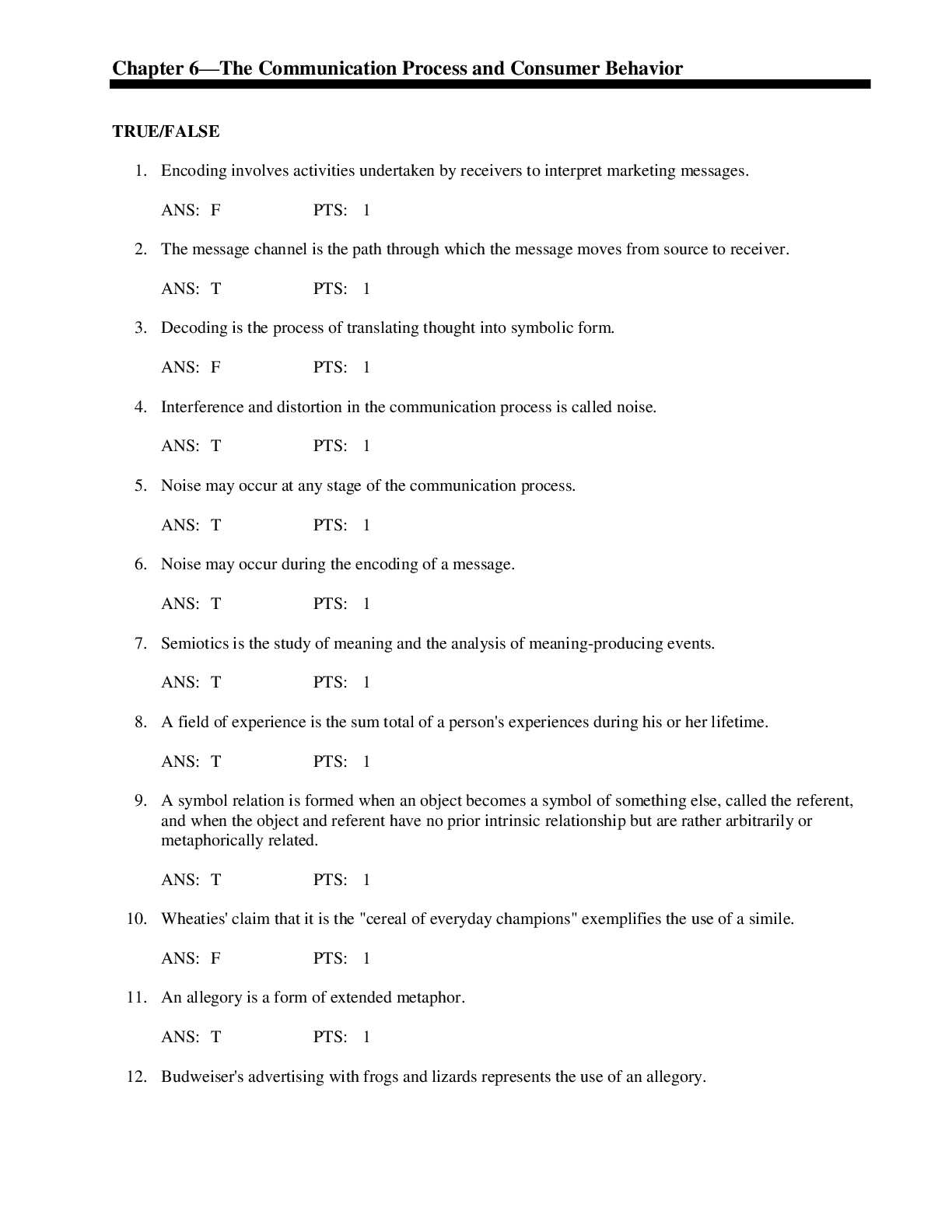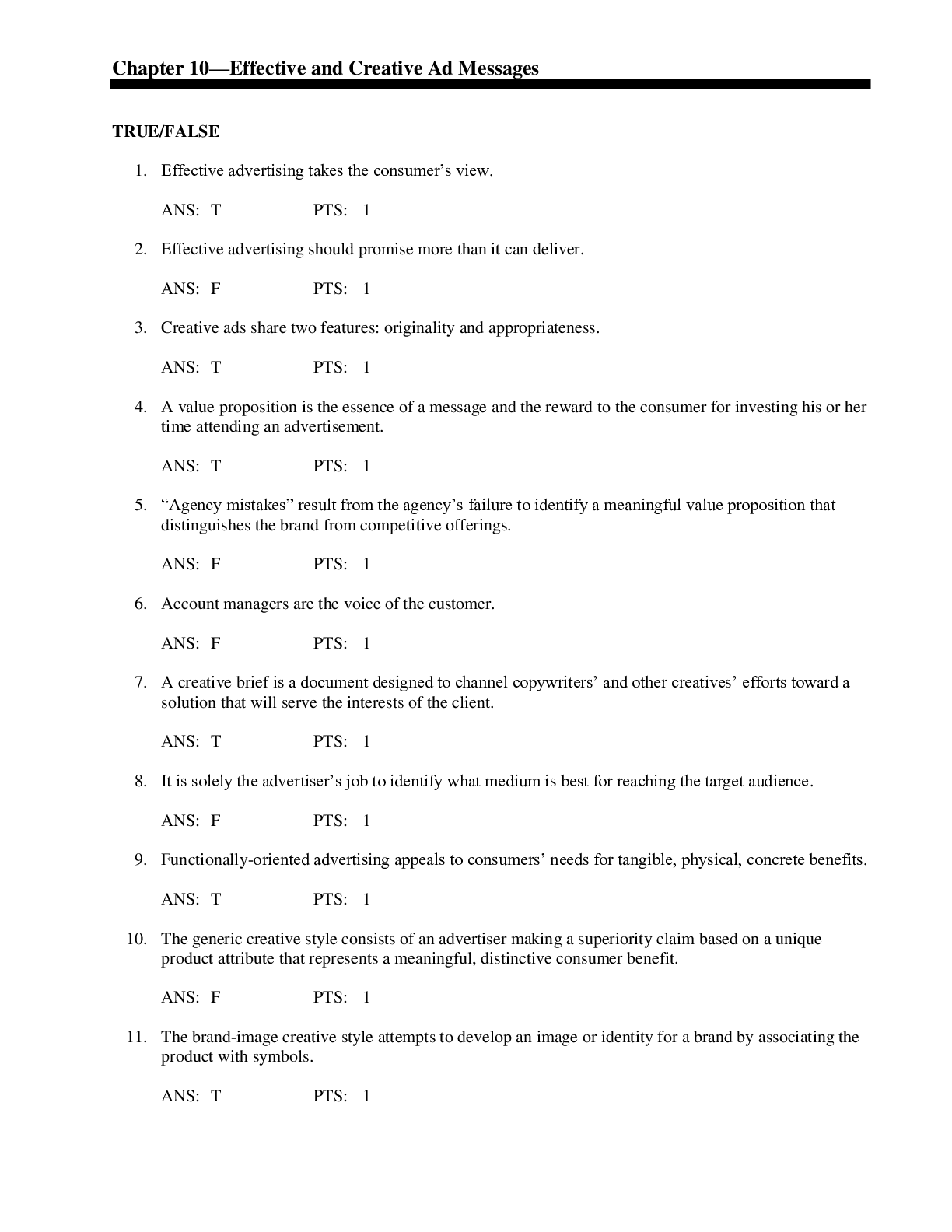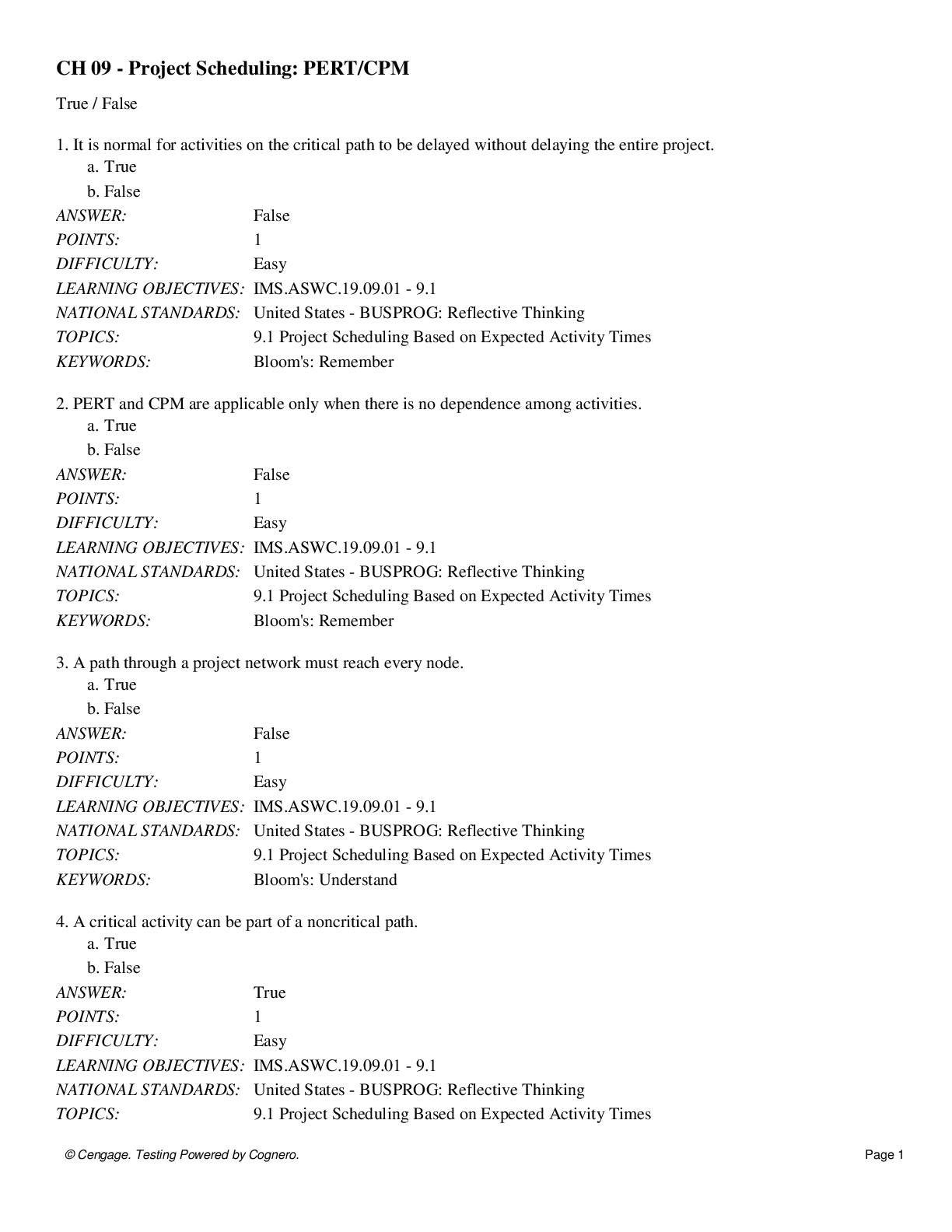Economics > QUESTIONS & ANSWERS > The University of Adelaide - ECON 7200quiz 6 . All Answers Provided (All)
The University of Adelaide - ECON 7200quiz 6 . All Answers Provided
Document Content and Description Below
If a perfectly competitive firm's price is less than average total cost but greater than average variable cost, the firm: A natural monopoly is protected by a barrier to entry t... hat takes the form of: If a monopolist's price is $50 at 63 units of output and marginal revenue equals marginal cost and average total cost equals $43, then the firm's total profit is: A virtuous cycle is: A perfectly competitive industry achieves allocative efficiency because: When a competitive firm finds that the market price is below its minimum average variable cost level, it will sell: When a proposed merger between two companies is being reviewed by the Australian Competition and Consumer Commission, the relevant market is defined by: If a natural monopoly regulatory authority sets a price where marginal cost is equal to demand: The total profit of a perfectly competitive firm can be calculated as: A perfectly competitive industry achieves allocative efficiency in the long run. What does allocative efficiency mean? An industry's long-run supply curve shows: For a natural monopoly: If a monopolist's price is $150 per unit, marginal revenue is $100 for the last unit produced and its marginal cost for the last unit produced is $100, then: Letters are used to represent the terms used to answer this question: price (P), quantity of output (Q), total cost (TC) and average total cost (ATC). Which of the following equations is equal to a firm's profit? Which of the following is true for a monopolist? If the market price is $25, the average revenue of selling five units is: To sell more output, the monopolist: How are sunk costs and fixed costs related? If a monopolist's marginal revenue is $35 for the last unit produced and its marginal cost is $30, then: Refer to Figure 8.2 for the following question(s). If average total costs are ATC2, the firm in Figure 8.2 will: The profit-maximising price for the firm in Figure 8.2 is: To profit maximise, the firm in Figure 8.2 will produce: Compared to perfect competition, a monopoly: If average total costs are ATC1, the firm in Figure 8.2 will: If a typical firm in a perfectly competitive industry is earning profits, then: Refer to Figure 7.1 for the following question(s). Refer to Figure 7.1. If Jason maximises his profit he will produce the output rate indicated by point ________ and his average profit will equal ________. Refer to Figure 7.1. Which of the following statements is true? If a perfectly competitive firm achieves productive efficiency then: A possible advantage of a horizontal merger for the economy is: Teresa grows broccoli commercially. Assuming that the broccoli market is perfectly competitive, if Teresa wants to try to increase revenue, what should she do? The demand curve for the monopolist's product is: A natural monopoly is a firm which: Assume a hypothetical case where an industry begins as perfectly competitive and then becomes a monopoly. Which of the following statements comparing the conditions in the industry under both market structures is true? The De Beers diamond mining and marketing company of South Africa became one of the most profitable and longest-lived monopolies in history. Which of the following has always threatened DeBeers' control of the diamond market? To maintain its status as a monopoly, a monopoly firm must have: Using a broad definition, a firm would have a monopoly if: A monopolist's profit-maximising output level is where: Assume a hypothetical case where an industry begins as perfectly competitive and then becomes a monopoly. As a result of this change: If a competitive industry has a perfectly elastic long-run supply curve, it is: Refer to Figure 7.3 for the following question(s). Refer to Figure 7.3. Which panel best represents the perfectly competitive organic produce market in which some firms are earning short-run economic profits, and if medical research suggests that switching from non-organic vegetables to organic vegetables will add 5 years to the average life span of consumers? The role of the Australian Competition and Consumer Commission is to: For a monopolist, if total revenue increases as output decreases, then marginal revenue is: If, in a perfectly competitive industry, market price is above average total cost at the output where marginal revenue equals marginal cost, then: A profit-maximising monopolist's price is: Economic efficiency in a market occurs when: Refer to Figure 7.2 for the following question(s). Refer to Figure 7.2, which illustrates the cost curves of a perfectly competitive firm. If the market price is P2 the firm will: Refer to Figure 7.2, which illustrates the cost curves of a perfectly competitive firm. If the market price is P1: Rebecca's Peanut Shop suffers a short-run loss. Rebecca will not choose to shut down if her Shop's total revenue exceeds her: Both buyers and sellers are price takers in a perfectly competitive market because: If a monopolist's price is $50 a unit and its marginal cost is $25 for the last unit produced, then: A public enterprise is: At the long-run equilibrium in a perfectly competitive industry: If a perfectly competitive firm's price is less than average variable cost, the firm: If price = marginal cost at the output produced by a perfectly competitive firm and the firm is earning an economic profit, then: Although some economists believe network externalities are important barriers to entry, other economists disagree because: An individual seller in perfect competition will not sell at a price higher than the market price because: The total revenue curve with output on the horizontal axis for a perfectly competitive seller is: If a monopolist's price is $20 per unit, marginal revenue is $10 for the last unit produced and its marginal cost is $15, then: A monopoly: Which of the following is a responsibility of the Australian Competition and Consumer Commission (ACCC)? A perfectly competitive industry will be in long-run equilibrium when: Refer to Figure 8.3 for the following question(s). At the quantity that the firm in Figure 8.3 should produce to maximise profits, the market clearing price is: Economic efficiency requires that a natural monopoly's price be equal to: If a typical firm in a perfectly competitive industry is incurring losses, then: A patent or copyright is a barrier to entry based on: The significance of a horizontal demand curve to a seller in perfect competition is the: If a firm shuts down it will: Some markets have many buyers and sellers but fall into the category of monopolistic competition rather than perfect competition. The most common reason for this is: If one firm in a perfectly competitive industry raises the price it charges to consumers, which of the following is the most likely outcome? The demand for each seller's product in perfect competition is horizontal at the market price because: In the long run, a perfectly competitive market will: If the market price is $25 in a competitive market, the marginal revenue from selling the fifth unit is: If a firm has market power and has earned monopoly profits for some time, Joseph Schumpeter would predict: A very large number of small sellers who sell identical products implies: Compared to perfect competition, under monopoly consumer surplus is: eliminated, as the monopolist charges the highest price possible. If a monopoly is producing an output level where marginal revenue is less than marginal cost, the firm: If a perfectly competitive seller is producing at an output where price is $11 and the marginal cost is $14, then to maximise profits the firm should: Both individual buyers and sellers in perfect competition: An individual seller in perfect competition will not sell at a price lower than the market price because: Which of the following is a characteristic of a firm in a perfectly competitive market? Which of the following relationships is not correct for a firm in perfect competition? If, in a perfectly competitive industry, market price is below average total cost but above average variable cost at the output where marginal cost equals marginal revenue, then: For a natural monopoly to exist: If, as the industry expands, a competitive industry can supply larger quantities at a lower long-run equilibrium price, it is: Assuming the personal computer industry is perfectly competitive, the fact that the price of personal computers over the last decade has fallen would signify that the industry is: [Show More]
Last updated: 1 year ago
Preview 1 out of 30 pages
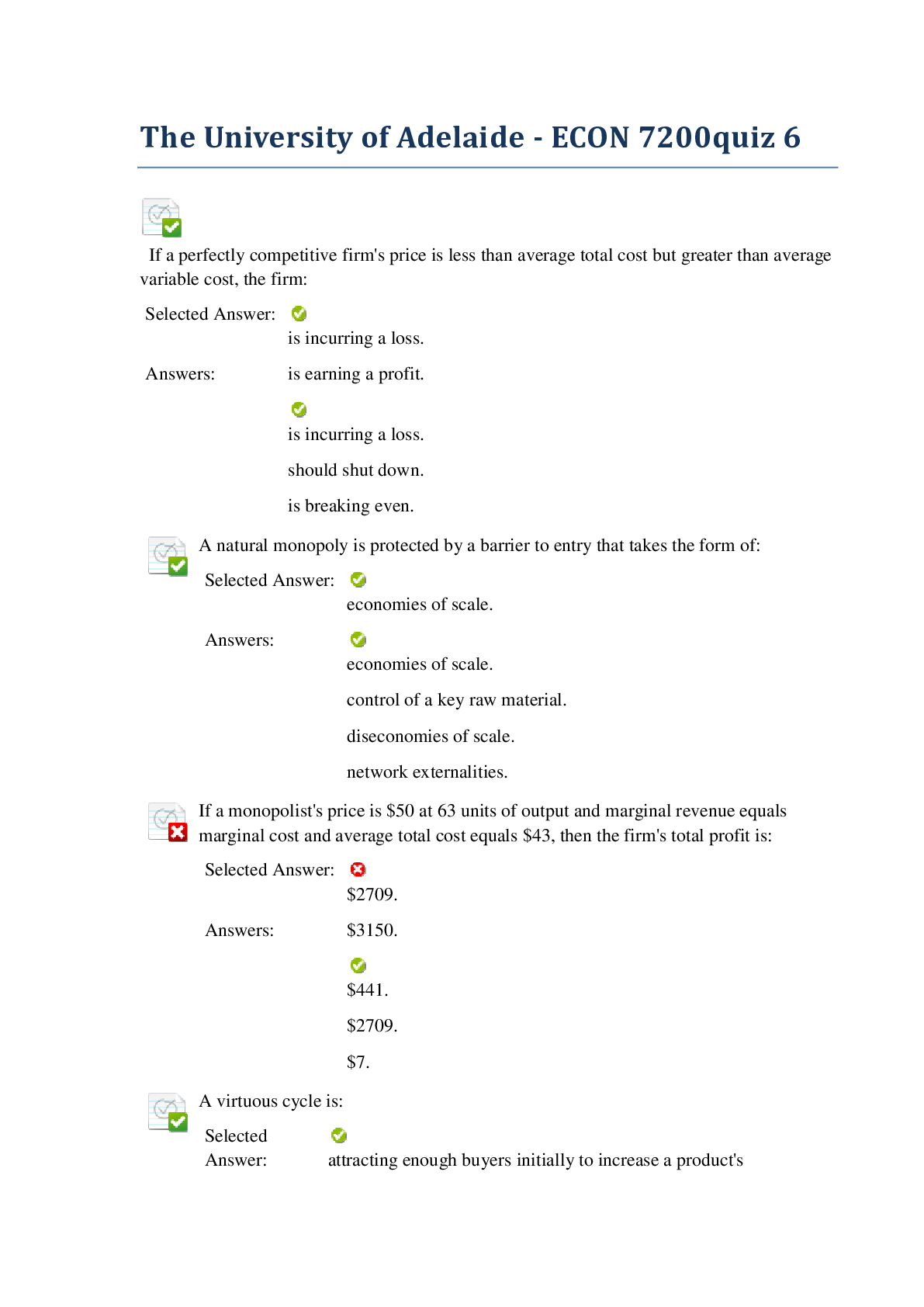
Buy this document to get the full access instantly
Instant Download Access after purchase
Add to cartInstant download
We Accept:

Reviews( 0 )
$11.00
Document information
Connected school, study & course
About the document
Uploaded On
May 16, 2020
Number of pages
30
Written in
Additional information
This document has been written for:
Uploaded
May 16, 2020
Downloads
0
Views
78

